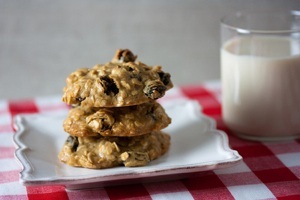Buttery Vegan Shortbread Cookies
0
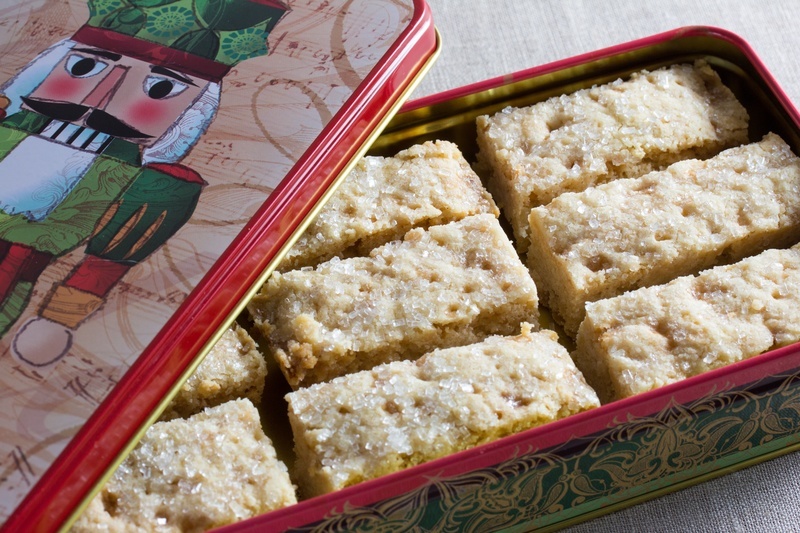
There’s just something about buttery shortbread that’s otherworldly. How does that rich, savory-sweet, toastiness, sweep into your palate with buttery wave after buttery wave? How does it exist with such a crispy texture? That snap when you bite into it unleashes a lingering aroma that takes over you and lets you know that you’ve arrived. Everything is going to be okay now. As long as you don’t hog all the shortbread.
I’m pretty picky about my shortbread. I believe it should be a celebration of the flavor of butter. Any other flavors present need only be there to play a supporting role. As you bite in, it should yield with a snap and infuse the senses with buttery richness. But this is vegan baking. How do you do all these things as well as showcase butter?
Bringing out the butter with vegan shortbread
This sounds all well and good, but how are you supposed to obtain these characteristics in vegan shortbread? For years I didn’t even try and just lowered the bar, tricking myself into thinking that regular vegan shortbread that adopts store-bought margarine did the job just fine.
After I began experimenting with Vegan Butter, I decided to delve into the oily art of butter-infused desserts. After a few years of experimenting and reading up on shortbread food science, I learned that coconut oil provided an extra layer of buttery notes when baked into dry, crispy desserts. How could this be? Well, when coconut is combined with flour and the other components in Vegan Butter, magic happens and intense butter flavor is enhanced as the flour toasts during baking. You'll just have to taste this to see what I mean. One of the other factors driving this flavor development is due to coconut oil containing flavor compounds called lactones. These are among the same flavor compounds that give cream its signature flavor and aroma.
Find more Coconut recipes on Veganbaking.net
While baking, the coconut notes combine with the toastiness of all-purpose flour to provide a surprisingly substantial amount of savory, butteriness. I then began experimenting with Vegan Butter variations. I found that Regular Vegan Butter with refined coconut oil swapped out for unrefined coconut oil provided most of what I was looking for. But the texture of the shortbread was crumbling, along with my sanity. After considerable recipe testing I was in dire straits and badly in need of finding a way to optimize the texture for a suitable crispy mouthfeel.
Understanding traditional shortbread
The shortbread I kept making just wouldn’t stay together. It was retaining too much moisture and falling apart. Morale was falling. When I increased the water-based ingredients, it would get softer after baking. When I reduced the water-based ingredients, it would just turn to dust.What makes shortbread with dairy-based butter stay together and shortbread with Vegan Butter fall apart? To answer this question we need to take a look at how traditional dairy-butter shortbread works.
Traditional shortbread gets the short from the fact that doesn't bend or stretch; it snaps off when bent or cut. Back when shorbread got its name, bakers probably didn't know that this was because the large amounts of fat in the recipe was doing two things:
- The fat coats glutenin and gliadin strands, the protein components that later hydrate and combine to make up gluten in the flour. Large amounts of fat makes them slippery, which reduces the chances of them making strong bonds.
- The fat makes the glutenin and gliadin strands hydrophobic, or water repelling by coating them. These gluten precursors require water in order to form bonds. Keeping water from the gluten is desired to a certain extent, because if gluten gets a chance to take a sip, it'll drink up as much as it possibly can and hold onto lots of it during baking, contributing to a soft texture.
Gluten is pretty powerful stuff and it absolutely loves water. So usually a gluten-free starch-based flour such as rice flour or cornstarch is added to displace more gluten to make sure it backs off the water supply. So the takeaway here is that, as in pie crusts, shortbread is basically all about the manipulation of gluten.
Fine tuning vegan shortbread texture
So how was my Vegan Butter contributing to my crumbly texture issue? I decided to look into other aspects that make my Vegan Butter different than dairy-based butter.My Vegan Butters use various ingredients to get the oil and water-based ingredients to mix well and enable a smooth creaminess. These ingredients consist of lecithin and xanthan gum. Lecithin is an emulsifier which allows oil and water to mix. Xanthan gum also has emulsification abilities, as well as holds onto air bubbles to mimic dairy-based butter’s ability to do the same. I really didn’t need Vegan Butter to hold onto air bubbles in this particular case. What if I dropped it? After all, xanthan gum is also hygroscopic, which means on a microscopic scale it's probably writing endless love letters to water. Once it gets hold of it, it just won’t seem to let it go, even after extended baking. Wait, didn't we just go through all this drama with the gluten? Deja vu!
While I'm at it, why don't I ax the lecithin as well? I'm primarily concerned about fat inhibiting gluten in this recipe. The smooth, consistently soft characteristics that lecithin imparts in Vegan Butter aren't needed here.
Once I made my custom version of Regular Vegan Butter and used it in the shortbread, I knew I was onto something! The shortbread congratulated me by snapping as I bit in. Now all I had to do was fine tune the salt to turn the butter level up to 11.
So the takeaway here is that, as in pie crusts, shortbread is basically all about the manipulation of gluten.
Maintaining shortbread texture
As I said earlier, a crispy texture is due to lack of water in the dough. In this state the shortbread actually contains less water than the surrounding air in most cases. I recommend storing the shortbread in a relatively air-tight container at room temperature. Why? Because after they're left out on the counter for a day or so they'll actually start to pull in moisture from the surrounding air which will result in a soft, crumbly texture. The good news is that if you find your shortbread in this state, you can bring it back to crispiness by placing it in your oven set to 275F (135C) for 20 to 30 minutes.The importance of sanding sugar
Sanding sugar, also known as sparkling sugar, consists of large sugar crystals. These crystals are larger than regular granulated white sugar crystals and they're more resistant to melting. Since their crystals are large, they tend to catch the light and shimmer like diamonds. I like to use sanding sugar where it can really be used to visually dress up an otherwise boring looking dessert. If this shortbread was baked up without anything dressing up the top, it would look rather dull. Since I want the look to match the intensity of the buttery punch, sanding sugar is a great fit here. Remember, the best food allows you to get excited about it before you even put it in your mouth!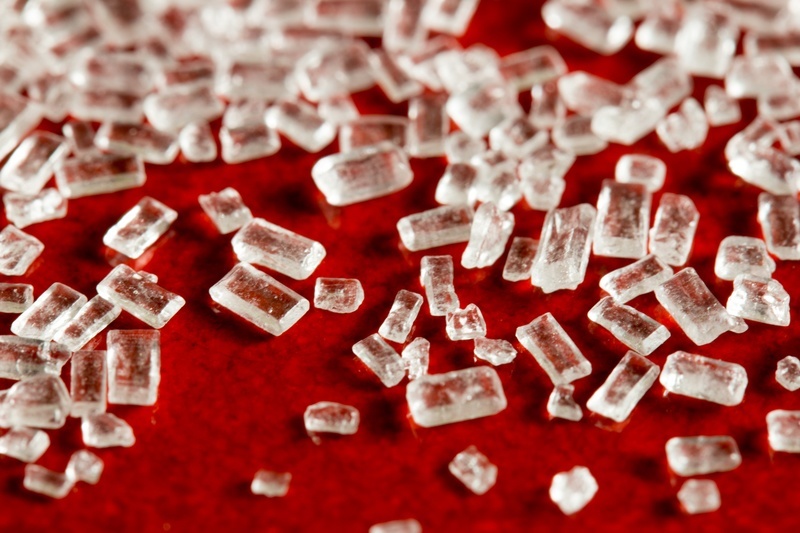
This vegan shortbread emphasizes buttery flavor and crispy texture. Feel free to use it as a base for other shortbread variations. You should be able to swap out the rice flour with other gluten-free starch-based flours such as cocoa powder, almond flour or even coconut flour; just make sure there are no hydrocolloids like xanthan gum hanging around. Alternative flours can help you branch out into unexplored vegan shortbread territory. Just be sure to leave the all-purpose flour intact. And no, I don't have a 100% gluten-free version of this recipe. Yet.
TIP: This recipe includes a recipe for a custom Vegan Butter called Shortbread Vegan Butter. It's xanthan gum and lecithin-free and has more salt to amplify buttery flavors. It’s found below and absolutely required in order to get the proper texture. I usually make it a few days before I make the shortbread to make preparation as simple as possible.
Buttery Vegan Shortbread Cookie Recipe
Yield: one 8 x 8 inch square of cookiesFor the Shortbread Vegan Butter
¼ cup + 2 teaspoons soy milk½ teaspoon apple cider vinegar
½ teaspoon coconut vinegar (if you can’t find coconut vinegar, substitute with ½ teaspoon apple cider vinegar so the total is 1 teaspoon apple cider vinegar)
½ + ⅛ teaspoon salt
½ cup + 2 Tablespoons + 1 teaspoon (130 grams) unrefined coconut oil, melted
1 Tablespoon canola oil, light olive oil or rice bran oil
For the shortbread
1 ½ cups + 1 Tablespoon all-purpose flour
3 Tablespoons rice flour or cornstarch
7 Tablespoons granulated white sugar
1 cup (2 sticks or 215 grams) Shortbread Vegan Butter, refrigerator temperature
2 teaspoons sanding sugar
Prepare the Shortbread Vegan Butter
1) Curdle the soy milk
Place the soy milk, apple cider vinegar, coconut vinegar and salt in a small cup and whisk together with a fork. Let it sit for about 10 minutes so the mixture curdles.2) Mix the Vegan Butter ingredients
Melt the unrefined coconut oil in a microwave so it's barely melted and as close to room temperature as possible. Measure it and add it and the canola oil to a food processor. TIP: Making smooth Vegan Butter is dependent on the mixture solidifying as quickly as possible after it's mixed. This is why it's important to make sure your coconut oil is as close to room temperature as possible before you mix it with the rest of the ingredients.
3) Transfer the Vegan Butter to a mold so it solidifies
Add the soy milk mixture to the food processor. Process for 2 minutes, scraping down the sides halfway through the duration. Pour the mixture into a mold and place it in the freezer to solidify. An ice cube mold works well. The vegan butter should be ready to use in about an hour. Store it in an airtight container in the refrigerator for up to 1 month or wrapped in plastic wrap in the freezer for up to 1 year. This recipe makes 1 cup (215 grams), or the equivalent of 2 sticks Shortbread Vegan Butter.
Learn more about Vegan Butter.
Prepare the shortbread
4) Mix your dry ingredients together
Preheat your oven to 425F (218C). If you have a food processor, add the all-purpose flour, rice flour or cornstarch, granulated white sugar and pulse 10 times. The goal here is to get all of the ingredients mixed together with no lumps.If you don't have a food processor, place a sifter in a medium mixing bowl and place the all-purpose flour, rice flour or cornstarch, sugar and salt into it. Sift the ingredients into the mixing bowl.
Line an 8 x 8 inch square baking pan with parchment paper, leaving about an extra inch or so hanging off of either side. This excess parchment is what you’ll use to lift the shortbread out of the pan after baking. Set the baking pan aside.

5) Cut your Vegan Butter into the dry ingredients
Cut the Shortbread Vegan Butter into ¼ inch cubes. If you used a food processor in Step 4, simply add the Vegan Butter cubes and pulse 20 times.If you sifted, add the Vegan Butter cubes to the flour and toss the mixture with your fingers until they're well coated. Use a pastry blender to mix until the mixture resembles coarse sand.
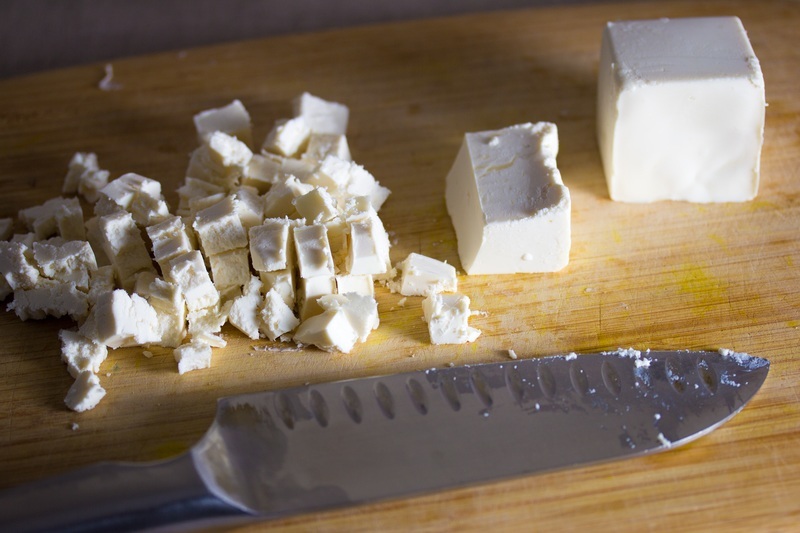
6) Bake to perfection
Press the dough in the baking pan and use the flat bottom of a drinking glass to compress the dough into place. Try to find a drinking glass that has the flattest bottom you can find. The trick is to press down on the drinking glass as much as you possibly can within reason and give it a very slight twist as you lift it off the dough so it releases without sticking. Work your way over the dough, back and forth until the dough is fully compressed and flat. This step is crucial because it presses the air out of the dough and compresses it together, ensuring it'll have a nice crisp structure after baking. Sprinkle the sanding sugar on top. Reduce your oven heat to 300F (149C) and bake for 30 minutes.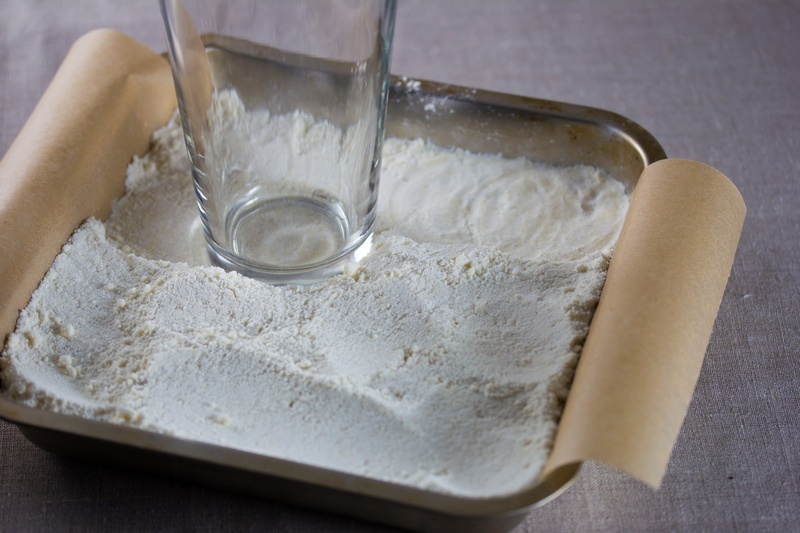
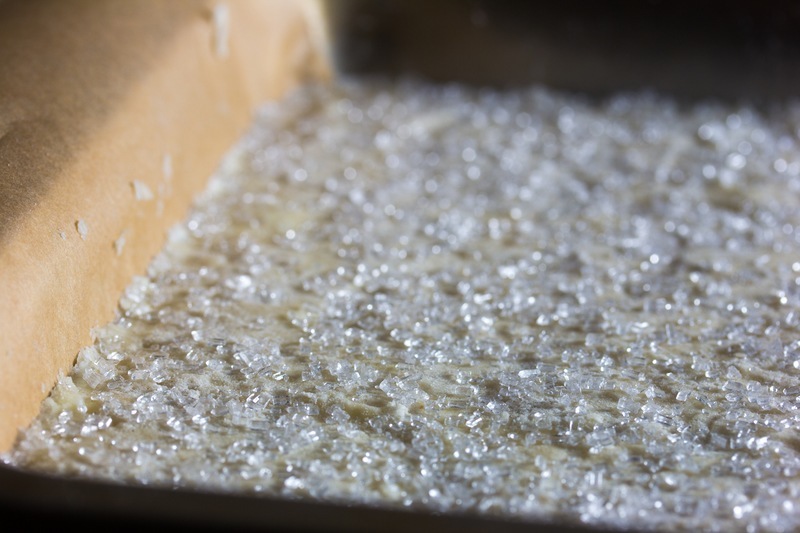
7) Cut into squares
Remove the shortbread from the oven. Using a paring knife, carefully cut your desired size of the cookies by slicing straight, through the hot dough. I usually cut into small rectangular pieces. I advise cutting pieces on the small side due to the richness of this shortbread. Alternatively, you can use a cookie cutter to cut custom shapes into the dough but keep in mind that this may result in wasted dough because you can’t roll the dough scraps into a ball and use it again like you can in other cookie styles.
8) Continue baking your vegan shortbread
Place the shortbread back into the oven, reduce heat to 275F (135C) and bake for 1 ½ additional hours. Remove it from the oven and allow it to cool on a wire rack. This allows the shortbread to lose as much of its internal moisture as possible which ensures a crispy texture. When cool, remove the shortbread from the baking pan by lifting it out by the parchment paper.To preserve crispiness, Buttery Vegan Shortbread should be stored in a relatively air-tight container at room temperature where it'll keep for up to 1 month.





